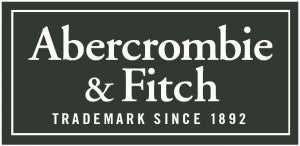 A mini soap opera on the negative power of brand endorsements has been going viral for the past week, involving actors in MTV’s controversial but hugely popular “The Jersey Shore” show. Big-name apparel brand Abercrombie & Fitch said it is offering Mike “The Situation” Sorrentino a “substantial payment” to stop wearing the brand’s clothes. Meanwhile, other rumors surfaced that Nicole Polizzi (known as “Snooki” in the same show) received a Gucci bag courtesy of a competing luxury brand.
A mini soap opera on the negative power of brand endorsements has been going viral for the past week, involving actors in MTV’s controversial but hugely popular “The Jersey Shore” show. Big-name apparel brand Abercrombie & Fitch said it is offering Mike “The Situation” Sorrentino a “substantial payment” to stop wearing the brand’s clothes. Meanwhile, other rumors surfaced that Nicole Polizzi (known as “Snooki” in the same show) received a Gucci bag courtesy of a competing luxury brand.
Wharton marketing professor Barbara E. Kahn notes that both stories have generated a lot of attention in both traditional media and online blogs for the stars and the brands. “So at the very least, it creates more brand awareness — which is usually a positive,” she says. “Whether the ultimate evaluation of the brand image as a result of the story is positive or negative probably depends on many factors: one’s pre-existing view of the brand, whether or not the story is deemed to be genuine or a publicity stunt, and one’s evaluation of the celebrity.”
Describing its offer as a “win-win situation,” A&F said, “We understand that [“The Jersey Shore”] is for entertainment purposes, but believe this association is contrary to the aspirational nature of our brand, and may be distressing to many of our fans.” The New Albany, Ohio-based company also extended its payment offer to other members of show’s cast.
For some, A&F’s desire to distance itself from the show may be clearly justified. Essayist Joel Schwartzberg notes in a Huffington Post column that although “The Jersey Shore” is “the top TV show for young teen girls,” it “features ‘real’ characters who spend their days being stupid, getting drunk and having indiscriminate sex.” He calls the show “a fire hose of destructive messaging.”
Others have described A&F’s move as a “stunt” aimed at drumming up sales ahead of the school season. In a Fox News opinion column, marketing and branding expert John Tantillo argued that “A&F is saying something that they probably don’t mean in order to get momentary attention.” He connected the move with concerns the company’s CEO, Mike Jeffries, expressed last week during A&F’s 2011 second quarter results announcement. “Costing pressures will be greater in the second half of the year, and macroeconomic uncertainty has increased,” Jeffries said. During the latest quarter, A&F sales grew 23% to $917 million, and net income rose 64% to $32 million.
If attention is what A&F may have sought, it certainly got that much. As Kahn says, “Some people may like the tongue-in-cheek aspect of the appeal, while others may balk at the audacity of a brand to tell anyone [what they] can, or should, wear.”



